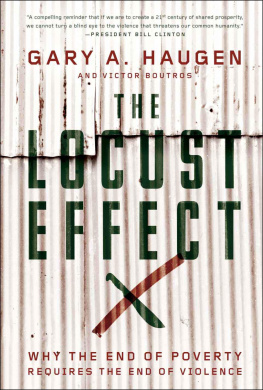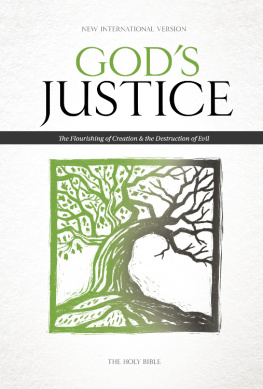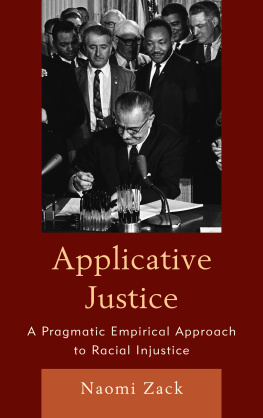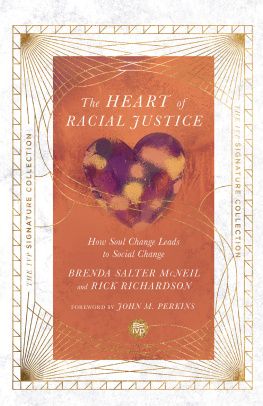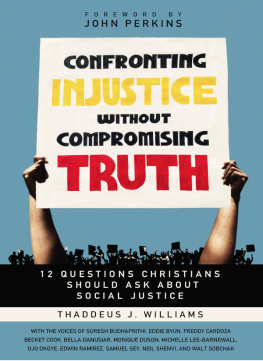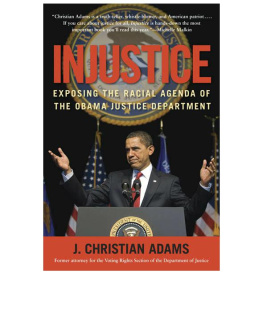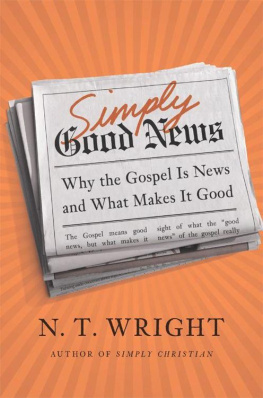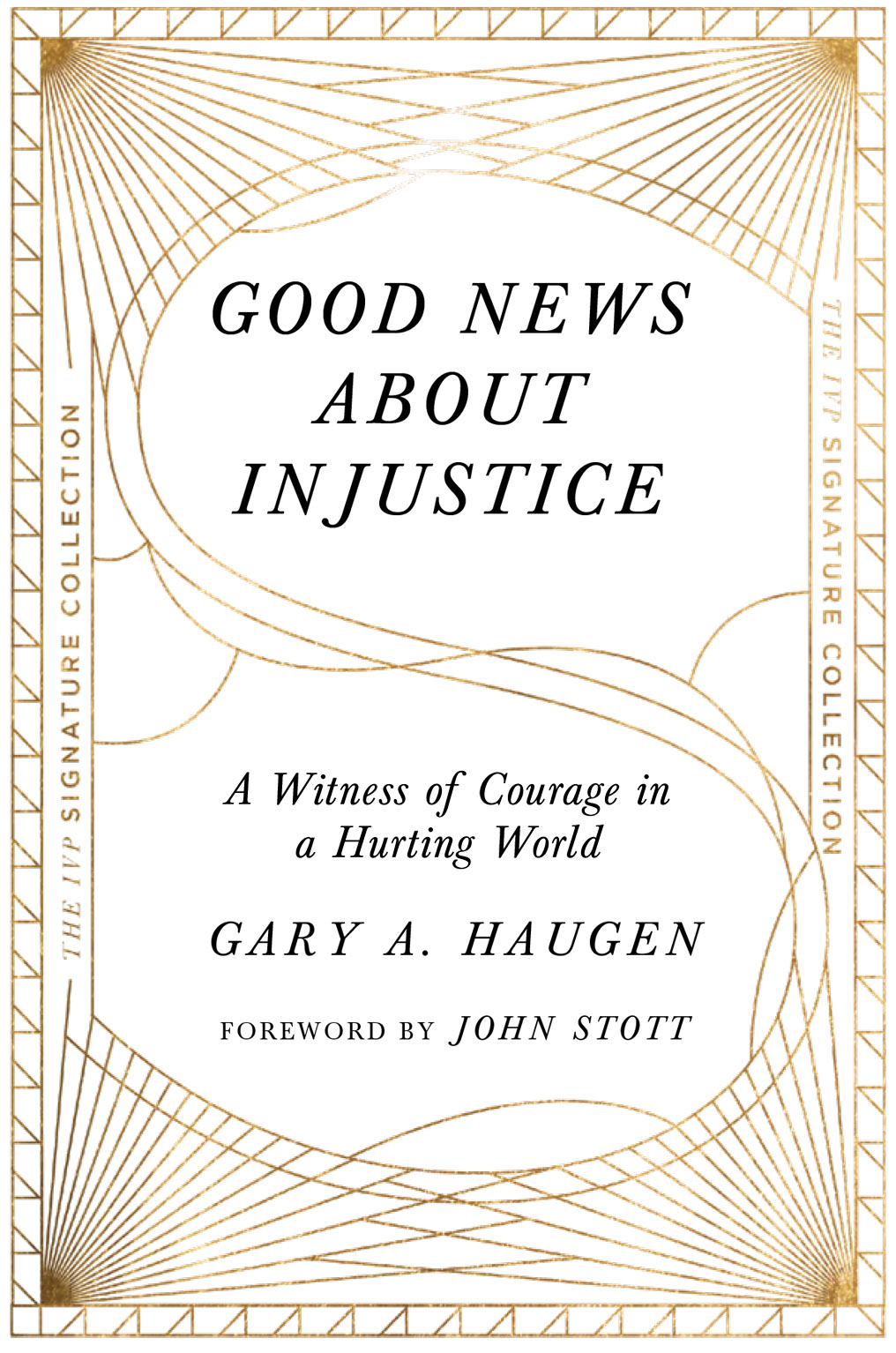Sommaire
Pagination de l'dition papier
Guide
InterVarsity Press
P.O. Box 1400, Downers Grove, IL 60515-1426
ivpress.com
Second edition 2009 by International Justice Mission
First edition 1999 by International Justice Mission
Published in this format in 2021. All rights reserved. No part of this book may be reproduced in any form without written permission from InterVarsity Press.
InterVarsity Press is the book-publishing division of InterVarsity Christian Fellowship/USA, a movement of students and faculty active on campus at hundreds of universities, colleges, and schools of nursing in the United States of America, and a member movement of the International Fellowship of Evangelical Students. For information about local and regional activities, visit intervarsity.org.
All Scripture quotations, unless otherwise indicated, are taken from the Holy Bible, New International Version. NIV. Copyright 1973, 1978, 1984 by International Bible Society. Used by permission of Zondervan Publishing House. All rights reserved.
While any stories in this book are true, some names and identifying information may have been changed to protect the privacy of individuals.
The publisher cannot verify the accuracy or functionality of website URLs used in this book beyond the date of publication.
Cover design and image composite: David Fassett
Image: Blurred candle Tim Umphreys @timumphreys
ISBN 978-0-8308-4868-3 (digital)
ISBN 978-0-8308-4867-6 (print)
This digital document has been produced by Nord Compo.
For my father and mother
Foreword
JOHN STOTT
G ary Haugens book is a powerful combination of narrative and Scripture, of dramatic storytelling and biblical reflection, of human injustice and the justice of God.
One moment we are in the Rwandan killing fields, watching with mute horror the genocide of Tutsis, or in the red-light district of a large Asian city, whose brothels hold young children captive, while the next moment we are deep in Scripture, exploring the character and the will of God. And the interaction between these two perspectives continues throughout the book.
On the one hand, we are introduced to injustice, which always involves the abuse of power, and to the wide range of its victims. We are confronted not only with the cruelties of bonded labor, enforced prostitution, rape, torture, lynching and the misappropriation of land, but also with the frequent failures of the law to bring the perpetrators to justice because they are protected by the establishment.
On the other hand, we are confronted in Scripture by the true and living God, who loves justice and hates injustice, whose anger is roused by evil and rests on evildoers, and who is moved with compassion toward all those who suffer.
What this book obliges us to do is to ask ourselves some basic and uncomfortable questions that living in a comfortable culture may never have allowed us to ask before.
First, what sort of God do we believe in? Is he concerned exclusively with individual salvation? Or does he have a social conscience? Is he (in Dr. Carl Henrys memorable phrase) the God of justice and of justification? How is it that so many of us staunch evangelical people have never seen, let alone faced, the barrage of biblical texts about justice? Why are we often guilty of selective indignation?
Second, what sort of a creature do we think a human being is? Have we ever considered the unique value and dignity of human beings, made in the image of God, so that abuse, torture, rape and grinding poverty, which dehumanize human beings, are also an insult to the God who made them?
Third, what sort of a person do we think Jesus Christ is? Have we ever seen him as described in John 11, where first he snorted with anger (v. 33, literally) in the face of death (an intrusion into Gods good world) and then wept (v. 35) over the bereaved? If only we could be like Jesus, indignant toward evil and compassionate toward its victims!
Fourth, what sort of a community do we think the church is meant to be? Is it not often indistinguishable from the world because it accommodates itself to the prevailing culture of injustice and indifference? Is it not intended rather to penetrate the world like salt and light, and so to change it, as salt hinders bacterial decay and light disperses darkness?
To ask ourselves these questions honestlyabout God, Christ, human beings and the churchand to answer them biblically, as Gary Haugen does, is to expose ourselves to radical challenge and change.
This book does not leave us in suspense or with the doubts, the cynicism, even the despair which the worlds monumental evil provokes in many Christian people. Instead, we are given solid grounds for hope. We are reminded of Gods character, of his purpose to work through his people and of some of the heroic social reformers of the past. We are not given utopian visions of a perfect society, but we are encouraged to expect some substantial success both in defending human rights and in bringing to justice those who violate them. Gary Haugen outlines practical ways in which his International Justice Mission has been at work since 1994 and in which members of the body of Christ can contribute their distinctive gifts and specialist ministries.
I heartily commend this book. It is well researched and well written. Its author faces the unpleasant realities of our fallen world and responds to them with a biblically developed mind and conscience. He has the sharp eye of a lawyer and the sensitive spirit of an authentic disciple of Jesus Christ. He pulls no punches. We need to learn from him, to know what he knows, to see (at least in our imagination) what he sees and to feel what he feels.
I defy anybody to emerge from exposure to this book unscathed. In fact, my advice to would-be readers is Dont! Leave the book alone!unless you are willing to be shocked, challenged, persuaded and transformed.
Preface to the Tenth Anniversary Edition

T here is nothing quite as awkward as an enthusiastic but misplaced celebration. Indeed, I can vividly remember setting one off in the lunchroom of my elementary school as a small boy. Our principal had jammed all of us into the lunchroom for a special assembly and launched the festivities by asking the scores of squirming children if anyone had a birthday. Unable to wait for my shy best friend, Marty, to out himself as the days Birthday BoyI leaped to my feet and shot my hand in the air to share what I knew about Marty. Amidst the deafening clamor bouncing off the concrete acoustics of the lunchroom, our ever-eager principal blew past my stammering objections and immediately began leading the raucous throng in a rousing and seemingly endless chorus of Happy Birthday and Hes a Jolly Good Fellowto me. Needless to say, when all the whoops and hollers and applause finally died down, there I stood, all alone in the now-silent lunchroom, awkwardly pointing and explaining to a sea of staring classmates that, actually, no, it was not my birthdaybut Martys.
The generosity and enthusiasm expressed for me was kind enough, but it was all just too awkward when expressed by mistake. I just wanted people to celebrate Martybut I ended up disastrously diverting unwanted and misplaced attention to myself.


